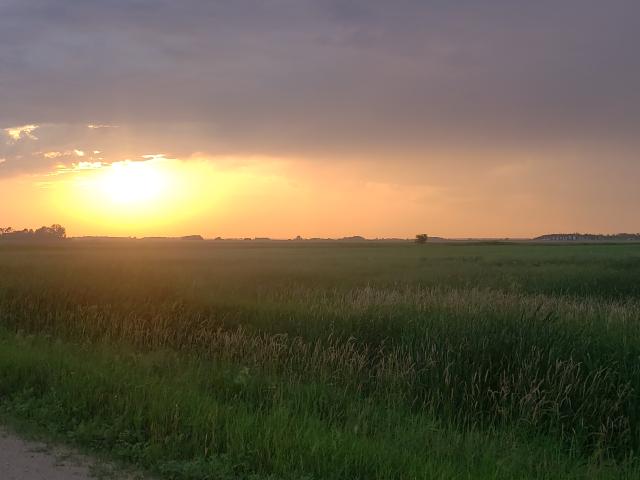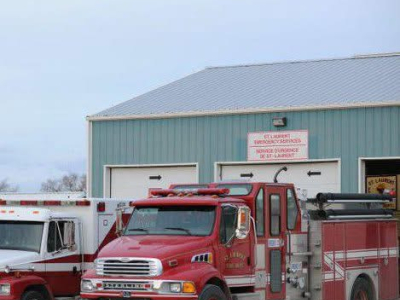A week of warmer weather made for some prominent advancements in crops, according to the weekly Manitoba crop report.
Some areas still saw isolated heavy rains, but the hot, sunny conditions helped dry most areas and promote growth.
Even then, the damage has been done, and some locations have claimed a state of "agricultural disaster".
There was a fair bit less rain in most areas, with the most precipitation seen in Interlakes Fisherton Station with 61.4mm of rain, and several areas across the province getting no rain whatsoever,
Overall, soil conditions range from wet to optimal, with the weather drying up moderately through the hot week.
Crops across the province progressed well with the hot, sunny week, with a visible amount of growth in the fields.
In Cereals, Fall Rye and Winter Wheat are at the soft to hard dough stages with the most advanced fields ripening, Grain corn ranges from V6-V10, and spring wheat ranges from Flag to soft dough Stages.
The Spring Wheat is getting fungicide applications for fusarium head blight where it can, but some crops experienced lodging from heavy rainfall. Between the lodging and wet start, 5 to 10% of the crops are being reported as poor in the Southwest, Northwest, Central, and Interlake regions.
Oil seeds are moving along well. Canola ranges from rosette to early podding stages, Sunflowers from R1 to R2, and Flax Crops range from stage 5 to 7.
Pulses and soybeans also progressing, though with some differences in soybeans. Early-seeded fields are around the r1 stage, but late fields are near the second and fourth trifoliate stages.
Field peas are in the R1 to R3 stage, and The most advanced edible beans are approaching flowering.
Forage crops were greatly bolstered by the week's weather, with haying yields expected to be normal to above average. That being said, dry down times are a struggle, as the continued rain and high humidity are slowing it significantly.
Progress on first-cut harvest of hayfields is behind and producers are concerned about both the quantity and quality of harvested feed that will be available this winter. Producers have turned to bale wrapping to make silage bales as drying conditions have been difficult.
Livestock conditions are pretty optimal though, with dugouts and ponds full.
There has been an increase in insect pressure, as well as the potential for foot rot and pink eye. Even with these potential issues, cattle populations are doing quite well.
Taking things closer to home in the northwest regions, it was very much a week of high temperatures and scattered thunderstorms across the region.
The highest temperature recorded was at the Ethelbert station, clocking in at 34 °C. At least there was slightly less rain, as precipitation ranged from 1 mm at Grandview and Keld to 25 mm at Swan Valley.
Several thunderstorms brought heavy rain, hail, and strong winds, and those storms resulted in crop lodging in the Roblin and Swan Valley/Benito areas.
The RM of Mossey River, as well as the RM of Dauphin, declared a state of agricultural disaster due to the effects of heavy rainfalls this year.
The earliest field peas are in the R3 stage, and the remainder of the crop is in R2. The majority of field peas look good, however there are fields affected by the excess moisture and doing poorly.
Most of the spring wheat is headed and flowering, with the most advanced crops in the grain development stage with the remainder of fields in the tillering stage. Fields affected by excess moisture are showing signs of stress and are yellowed and stunted.
Many fields have been sprayed with fungicides for fusarium head blight.
Canola crops continue to be quite varied. The earliest seeded fields are flowering, and the remainder is in the bolting and rosette stages. Spraying continues to be a challenge in some areas due to excess moisture. Some poorer fields across the region are bolting due to stress.
Soybean crops are headed into R1 and mostly looking good. The recent heat has helped and advanced the crops.
Finally, Winter wheat and Fall rye crops are in the grain development stage and looking good in most areas unharmed by excess moisture.
Another sunny and hot forecast is in the works for this week, with temperatures near 30 °C. It should be another excellent week for growth, and hopefully, the wetter fields become accessible for the work they need to be done.
That's our look at the crop report this week. Until next week, here's wishing all Manitoba's producers a safe and productive season!







